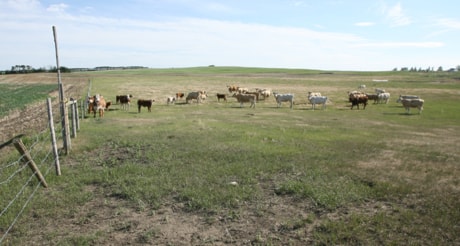A moisture map shown to Lacombe County councillors told the grim tale.
Vast swaths of Central Alberta were coloured red or orange, indicating areas where little or no rain has fallen this spring.
It didn’t take council long to unanimously decide Lacombe County should join the growing list of rural municipalities in Alberta declaring themselves agriculture disaster areas. The County of Stettler made a similar move Wednesday joining at least six other municipalities.
“I think we would be remiss if we didn’t move today to make that declaration,” said Councillor Rod McDermand.
“The east end of the county is in really bad shape.”
County Reeve Terry Engen said in some parts of the county crops have already been wiped out. Conditions aren’t as bad in the west side of the county, which runs in a narrow strip from just west of Eckville to the west shore of Buffalo Lake.
Engen said declaring a disaster area does not offer any financial relief to farmers. However, it sends a signal to provincial agriculture officials that the municipality is hard hit and should be considered for whatever financial help might be coming.
Agriculture services boards across Alberta have already been bending the ear of MLAs and the Agriculture Minister to ensure they are aware of the desperate situation.
The last time the county was declared a disaster area was 2002, when a similar drought devastated crops and led to widespread feed shortages. The federal government eventually came through with a program allowing farmers forced to sell off livestock to defer taxes, giving them some financial breathing space. The province also announced more than $300 million in aid for farmers.
Keith Boras, the county’s manager of environmental and protective services, said conditions vary somewhat across the county, but in general there has been little improvement this spring.
Alfalfa that should be 75 centimetres high is barely 45 centimetres in many places. Cereal crops appear to be faring a little better, but there is no doubt more rain is needed.
“I think (cereal crops) have some ability to improve if they get some moisture.”
Boras said it is not necessary for a municipality to declare itself a disaster area for its residents to be eligible for aid. In 2002, rural municipalities that had not declared disasters were included in aid packages.
pcowley@www.reddeeradvocate.com
